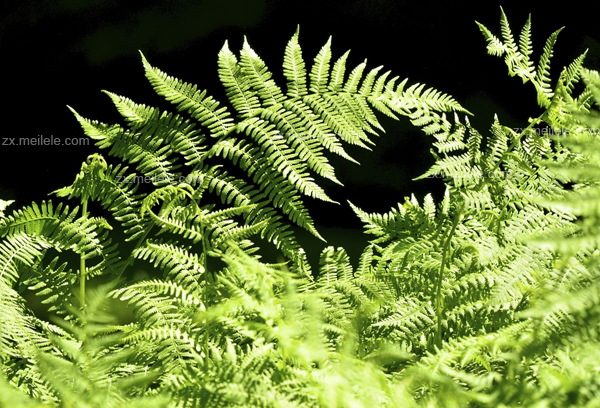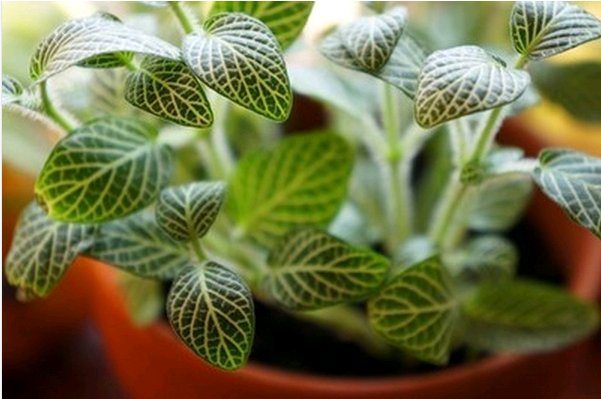How to raise pteridophytes
How to raise ferns, pteridophytes are more and more favored by people because of their strong negative tolerance, few diseases and insect pests, simple management and so on. However, due to people's lack of understanding of ferns and negligence in management, yellow leaves and fallen leaves are often caused. Therefore, scientific methods should be adopted in the process of cultivation and management.
Pteridophytes are suitable for loose soils rich in humus, so it is best to use rotten leaf soil or peat soil with 1 and 3 peat. In addition, as most of the pteridophytes are shallow root plants, the basin should be shallow rather than deep, and the basin should be changed every 2-3 years.
Pteridophytes like dampness and have high requirements for air and soil moisture. During the growing period, they should be watered once a day, while during the period of exuberant growth, they should spray water 2 or 3 times a day. If it is placed indoors, it should be watered every 2-3 days, which can replenish part of the water on the one hand and wash away the dust on the leaves on the other hand, which is not only conducive to plant photosynthesis, but also conducive to ornamental. It should be watered less during the winter dormancy period, and then irrigated when the basin soil is slightly dry, and the thin liquid compound fertilizer should be applied every 2-3 weeks in the growing season. If the leaves are thin and yellow, it means that the growth is not prosperous, the times of fertilization should be increased or no fertilizer should be applied. For withered branches and yellow leaves and some unideal branches and leaves should be cut off from the soil surface, in order to keep the whole branches fresh and beautiful, and conducive to the germination of new branches.
In the north, there is heating equipment indoors, so it is not a problem to spend the winter indoors.
Although pteridophytes have a certain shade tolerance and can grow well in a bright room, it is also easy to cause withered and yellow leaves in a dark room, so the plants in the bright and dark places should be exchanged every 2 to 3 weeks. In addition, on the balcony (especially the high-rise balcony), due to strong light, strong wind and dryness, these conditions are extremely disadvantageous to the growth of pteridophytes. If there are no warm measures, they must not be placed, otherwise they are very easy to cause leaves to yellowing and fall off. The above is an introduction to how to raise ferns.
What is a fern and how to raise it?
Pteridophyte is a relatively primitive group of higher plants, and it is also the earliest terrestrial plant. This plant is an herb growing in the mountains, with tenacious and exuberant vitality, all over the temperate and tropical zones of the world.

What are ferns? ferns are woody plants that grow in lowlands. They need water as part of the regeneration cycle, and begin to derive a variety of different species, which is still a very strong plant today. Ferns have a life cycle of alternating generations, which is cycled by two sets of gametophytes and a single set of gametophytes. The typical life cycle of pteridophytes is to produce a single set of spores from the sporophyte through meiosis; the spores divide through cells to form gametophytes; gametes produce germ cells through mitosis; mobile, flagellate sperm fertilize eggs that still adhere to the prothallus; fertilized eggs form a double set of fertilized eggs and grow into sporophytes by mitosis. How to raise pteridophytes there are different suitable planting areas for different ferns, and the adaptability of varieties selected from different regions is different. For example, the pH of the soil is very important for the growth of ferns, most ferns need an acidic growth environment, if ignored, it will affect its growth. For example, Osmunda Osmunda is suitable for growing in slightly acidic soil, so it is easy to grow in the south. However, due to the alkalinity of the water in the north, if you want to grow well, you need to treat the water, otherwise it will be longer and worse. Ramet propagation refers to pouring the plant out of the basin and dividing one plant into several plants as needed, each with roots and leaves. Be careful when dividing plants, do not damage the growing point, and keep the roots as much soil as possible. Cut off aging and damaged leaves and roots. Replant ramets and water them according to the original soil level. Ramet propagation has no strict seasonal requirements, and can be carried out all the year round if necessary. Tissue culture can be used for tissue culture of pteridophyte liquid, and tissue culture can be used for in vitro rapid propagation of species that produce little or no spores and are difficult to reproduce with spores, or for valuable species. In order to carry out large-scale modern commodity production, tissue culture is also needed. Ferns are in different growth periods and have different requirements for light. In general, the initial stage of growth, that is, the budding stage, to prevent excessive light, more shade. The dormant period should be placed in a place with plenty of light. Most ferns like filtered, indirect or reflected light. If there is not enough light, the plant will grow too long and appear weak or wilting. What is a fern and how to raise it?
Pteridophyte is a relatively primitive group of higher plants, and it is also the earliest terrestrial plant. This plant is an herb growing in the mountains, with tenacious and exuberant vitality, all over the temperate and tropical zones of the world.
What are ferns? ferns are woody plants that grow in lowlands. They need water as part of the regeneration cycle, and begin to derive a variety of different species, which is still a very strong plant today. Ferns have a life cycle of alternating generations, which is cycled by two sets of gametophytes and a single set of gametophytes. The typical life cycle of pteridophytes is to produce a single set of spores from the sporophyte through meiosis; the spores divide through cells to form gametophytes; gametes produce germ cells through mitosis; mobile, flagellate sperm fertilize eggs that still adhere to the prothallus; fertilized eggs form a double set of fertilized eggs and grow into sporophytes by mitosis. How to raise pteridophytes there are different suitable planting areas for different ferns, and the adaptability of varieties selected from different regions is different. For example, the pH of the soil is very important for the growth of ferns, most ferns need an acidic growth environment, if ignored, it will affect its growth. For example, Osmunda Osmunda is suitable for growing in slightly acidic soil, so it is easy to grow in the south. However, due to the alkalinity of the water in the north, if you want to grow well, you need to treat the water, otherwise it will be longer and worse. Ramet propagation refers to pouring the plant out of the basin and dividing one plant into several plants as needed, each with roots and leaves. Be careful when dividing plants, do not damage the growing point, and keep the roots as much soil as possible. Cut off aging and damaged leaves and roots. Replant ramets and water them according to the original soil level. Ramet propagation has no strict seasonal requirements, and can be carried out all the year round if necessary. Tissue culture can be used for tissue culture of pteridophyte liquid, and tissue culture can be used for in vitro rapid propagation of species that produce little or no spores and are difficult to reproduce with spores, or for valuable species. In order to carry out large-scale modern commodity production, tissue culture is also needed. Ferns are in different growth periods and have different requirements for light. In general, the initial stage of growth, that is, the budding stage, to prevent excessive light, more shade. The dormant period should be placed in a place with plenty of light. Most ferns like filtered, indirect or reflected light. If there is not enough light, the plant will grow too long and appear weak or wilting. More information "| role of green roses | culture method of cactus | Snow bonsai in June | language of bell orchids | fengshui plants in office | | how to raise gardenias | cultivation methods of crab claw orchids | language of carnations | function of lavender | cultivation methods of camellias | | cultivation of carnations | cultivation methods of magnolia | picture of canna; picture of potted flowers | planting method of bowl lotus |
- Prev

How to raise reticulate grass? the breeding method of reticulated grass.
How to raise reticulated grass? reticulated grasslands are produced in tropical African jungles. They like cool, hot and humid environments, and grow luxuriantly in high temperature, high humidity and dark environment. South China can be cultivated all the year round in shady greenhouses or air-conditioned rooms. The cultivation temperature of Rhizoma reticulata should be above 18 ℃.
- Next

The way ferns reproduce: how do ferns reproduce? Propagation methods of pteridophytes
In addition to normal spore reproduction, the roots, rhizomes and leaves of ferns can produce new plants by producing asexual spores and apical meristems, so different propagation methods should be adopted according to different types of pteridophytes.
Related
- Fuxing push coffee new agricultural production and marketing class: lack of small-scale processing plants
- Jujube rice field leisure farm deep ploughing Yilan for five years to create a space for organic food and play
- Nongyu Farm-A trial of organic papaya for brave women with advanced technology
- Four points for attention in the prevention and control of diseases and insect pests of edible fungi
- How to add nutrient solution to Edible Fungi
- Is there any good way to control edible fungus mites?
- Open Inoculation Technology of Edible Fungi
- Is there any clever way to use fertilizer for edible fungus in winter?
- What agents are used to kill the pathogens of edible fungi in the mushroom shed?
- Rapid drying of Edible Fungi

